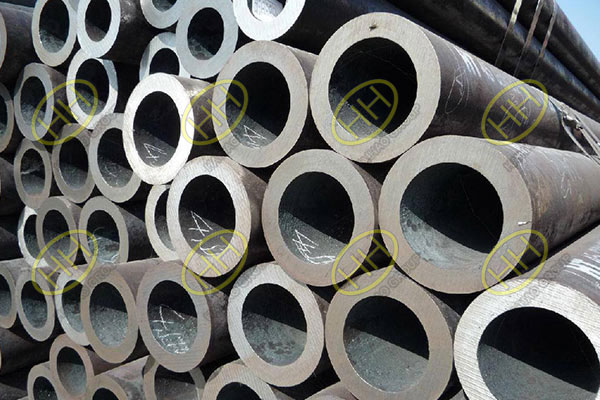The formation of hardened structure in the heat-affected zone
The critical cooling rate of P91 is low, the austenite is very stable, and the normal pearlite transformation is not easy to occur during cooling, so martensite transformation occurs when it is cooled to a lower temperature. Because of this, P91 has a great tendency to harden and cold crack.
Because the various structures of the heat-affected zone have different densities, expansion coefficients and different lattice forms, they will inevitably be accompanied by different volume expansion and contraction during the heating and cooling process; on the other hand, due to the uneven and Because of the high temperature, the internal stress of P91 welded joint is very large.
For P91, austenite is very stable, and it needs to be cooled to a lower temperature (about 400°C) to become martensite. The coarse martensite structure is brittle and hard, and the joint is under complex stress. At the same time, hydrogen diffuses from the weld to the near-joint zone during the cooling process of the weld. The presence of hydrogen promotes the embrittlement of martensite. As a result of its combined effect, it is easy to produce cold cracks in the hardened zone.

A335 P91 seamless steel pipes
Heat Affected Zone Grain Growth
Welding thermal cycle has a significant impact on the grain growth in the heat-affected zone of the welded joint, especially in the vicinity of the fusion zone where the heating temperature reaches the highest. When the cooling rate is low, there will be a large mass ferrite and carbide structure in the welding heat-affected zone, which will significantly reduce the plasticity of the steel; when the cooling rate is high, a coarse martensite structure will also be produced. The plasticity of the welded joint decreases.
The generation of softened layer
P91 steel is welded in the quenched and tempered state, and the softening layer in the heat-affected zone is inevitable, and the softening is more serious than the pearlite heat-resistant steel. When the heating and cooling rate are slower, the softening degree is greater. In addition, the width of the softening layer and its distance from the fusion line are not only related to the heating conditions and characteristics of welding, but also related to preheating and post-weld heat treatment.
Stress corrosion cracking
P91 steel before the post-weld heat treatment, the cooling temperature is generally not less than 100 ℃, if it is cooled at room temperature and the environment is relatively humid, stress corrosion cracking is prone to appear. German regulations: it must be cooled to below 150°C before post-weld heat treatment. In the case of thick workpieces, fillet welds and poor geometric dimensions, the cooling temperature should not be lower than 100°C. If it is cooled at room temperature, moisture is strictly prohibited, otherwise stress corrosion cracking will easily occur.
A335 P91 alloy tube conclusion
①P91 steel is highly alloyed, especially with a small amount of niobium, vanadium and other trace elements added. The high temperature strength and oxidation resistance are greatly improved compared with 12Cr1MoV steel, but its welding performance is poor.
②The plug test shows that P91 steel has a greater tendency to cold crack. The preheating temperature of 200-250 ℃ and the interlayer temperature of 200-300 ℃ can effectively prevent cold cracking.
③P91 must be cooled to 100~150 ℃ before heat treatment after welding, and kept for 1 h; tempering temperature is 730~780 ℃, and the keeping time is not less than 1 h.
④ The above welding process has been applied in the production practice of 200 MW and 300 MW boilers, and has achieved satisfactory results and obtained greater economic benefits.







